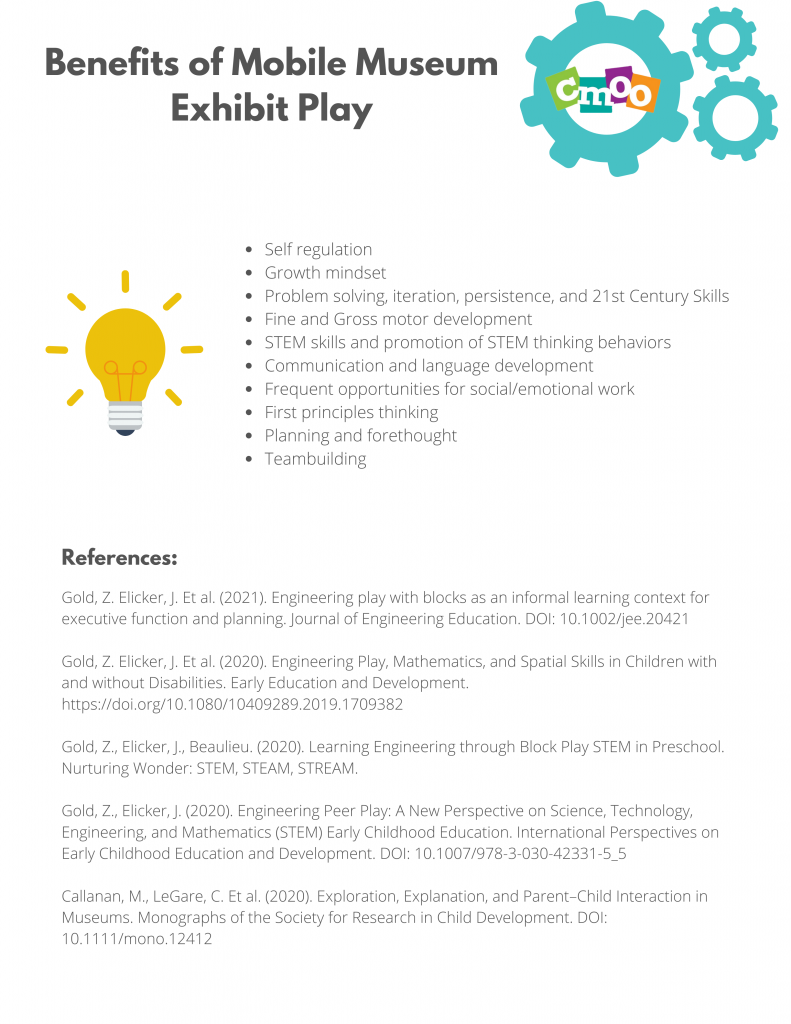Play Topic Suggestions
Light Lab – Manipulate light, colors of light (spectrum), transparent, translucent, opaque, color theory, vision, reflection, refraction, difraction, forms of energy; light & sound.
Wind Tunnel – Wind energy, measuring distance/projectile, weather, currents, flight, inventors, force and motion.
Loose Parts; Imagination Playground, Dinosaur Bones, ramps & balls, Nudel Kart- Structure, engineering, categorizing, gravity, force and motion, energy, compare and contrast materials’ weight, form, properties of matter, energy, measuring, dramatic play and storytelling.
Rube Goldberg Machine Collaboration- explore speed, momentum, energy and collision, while honing investigative, collaborative and reasoning skills
Standards
Literacy, Mathematics, Science, Social-Emotional, Language Development, Physical Development, Social Studies, Creative Arts, Technology
ELA/Literacy –
4W6 Conduct research to answer questions, including self-generated questions, and to build knowledge through investigating multiple aspects of a topic. (4-PS3-2), (4-PS3-3), (4-PS3-4), (4-ESS3-1)
4W7 Recall relevant information from experiences or gather relevant information from multiple sources; take notes and categorize information, adn provide a list of sources. (4-PS3-1), (4-PS3-2), (4-PS3-3), (4-PS3-4), (4-ESS3-1)
Mathematics & Science –
4-PS3-1. Use evidence to construct an explanation relating the speed of an object to the energy of that object.
4-PS3-2. Make observations to provide evidence that energy is conserved as it is transferred and /or converted from one form to another.
4-PS3-3. Ask questions and predict outcomes about the changes in energy that occur when objects collide.
MP.2 Reason abstractly and quantitatively. (4-ESS3-1)
MP.4 Model with mathematics. (4-ESS3-1)
4-PS4-2. Develop a model to describe that light reflecting from objects and entering the eye allows objects to be seen.
NY-4.G.3 Recognize a line of symmetry for a two-dimensional figure as a line across the figure such that the figure can be folded along the line into matching parts. Identify line-symmetric figures and draw lines of symmetry. (4-PS3-4)

